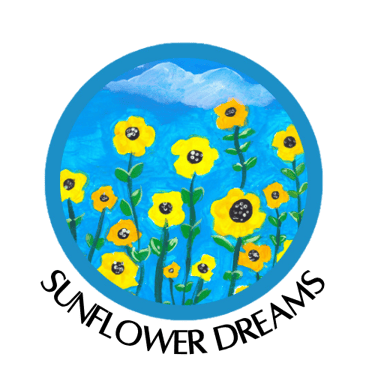Williamson Art Gallery and Museum, Wirral, United Kingdom
17 September - 20 December 2025
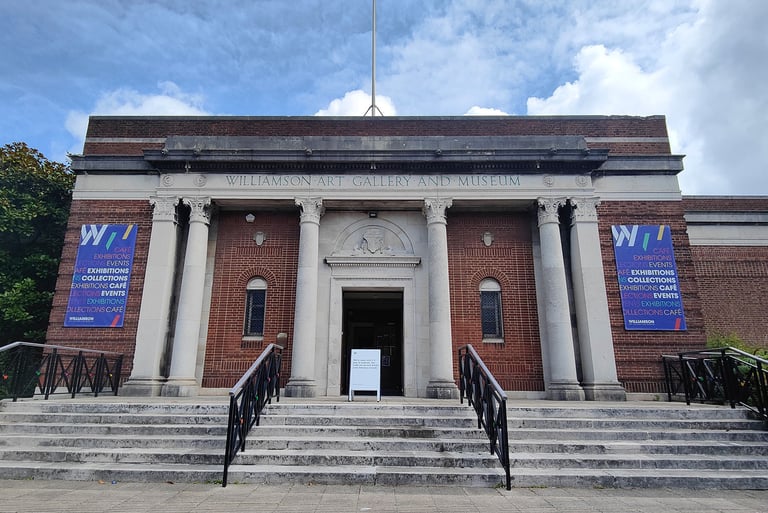

Address: Slatey Rd, Oxton, Birkenhead, Prenton CH43 4UE, Wirral, United Kingdom
To support the children through donations, check our donations page.
To know more about the team, read our the about us page.
Nastya’s painting is obviously inspired from folklore, and it is a beautiful piece of art, worthy of being displayed in an art gallery. Its meaning runs much deeper, due to the personal stories of the young artist who painting this piece and of the woman who created the original painting.
Nastya is from Druzhkivka, a town in Donetsk Oblast, with a population of over 50,000 before the full-scale invasion. The russian proxies captured the city in 2014, but it was liberated by the Ukrainian army in July 2014. Now the city is about 10 miles away from the frontline, where the city of Chasiv Yar has been completely destroyed, but it is still under Ukrainian control. If this city falls, Druzhkivka might be one of the next targets. In mid-August 2025 a mandatory evacuation of the city was announced by the Ukrainian authorities.
Nastya was inspired by Maria Prymachenko's work.
Artwork on display
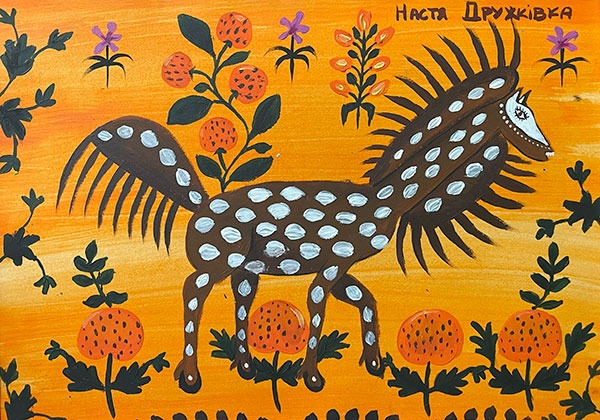

Maria Prymachenko painted Autumn is Riding on Horseback, in the style which made her famous, using whimsical motifs and magical creatures. She was born in 1909 in Bolotnya, a village between Kyiv and Chornobyl. As a teenager she decorated her own home, so beautifully that the villagers asked her to decorate their homes too. In 1935 she was selected for an all-Ukrainian exhibition of folk arts and crafts. She received a gold medal for her work at the World Exhibition in Paris in 1937. After WWII her work was forgotten until the 1960s, when once again was displayed in museums in countries such as France, Canada, Portugal, Belgium, Poland, and many others.
The Chornobyl disaster in 1986 influenced her artwork, but she continued to live and work in her native village, despite the proximity to the nuclear power plant. She died in 1997.
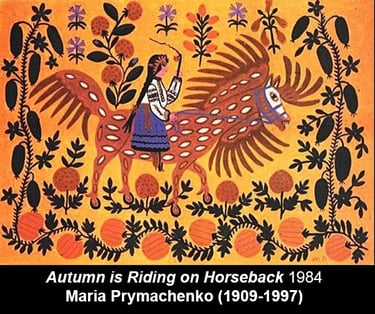

On the second day of the full-scale invasion, 25 February 2022, the russians hit the local history museum in the village of Ivankiv, Kyiv Oblast. Risking their lives, twice, the village’s residents rescued 14 works by Prymachenko while the museum was burning and then hid the artwork in their homes while they were under occupation.
After the full-scale invasion, her artwork was exhibited in Venice (2022), London (2023), New-York (2023-2024), Warsaw (2024), Lviv (2024).
As of February 2025, Ukrainian authorities say 2,024 cultural institutions have been damaged and hundreds of thousands of artefacts are believed to have been stolen from more than 40 museums in occupied or formerly occupied territories.
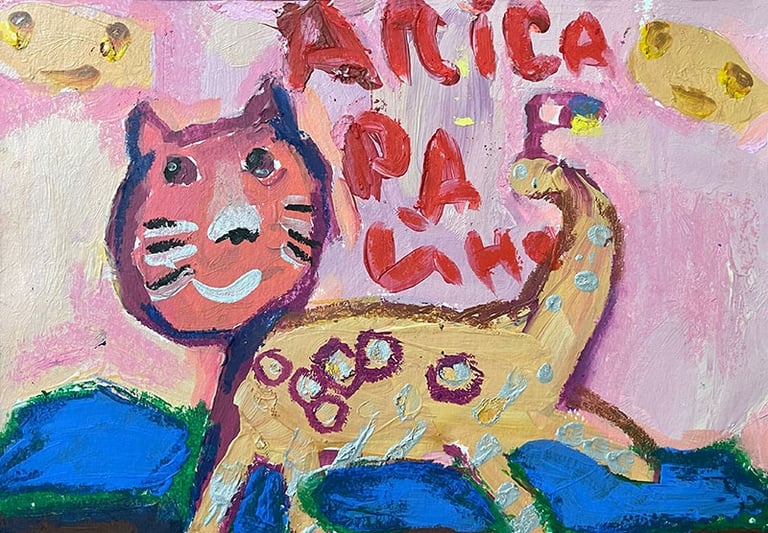

Alisa drew her cat, which obviously loves warmth as she is depicted under the heat of two Suns. It is a simple drawing by a young child, who loves her pet very much. It is also a story of loss.
Her family is originally from Crimea. They moved at the end of 2011, just before the russian occupation in 2014. She was born in Zaporizhzhia, and her family went to Pokrovsk for safety, but fled again to Lviv, the western city where is much safer.
Alisa’s father is in the army. Her big sister, aged 25, volunteered to join the army this year. In her mother’s words: “My home is where my children are”.
The family have lost the places where they lived. They left Crimea before it was occupied and annexed, but they are not able to go there while it is still under occupation. Not only it would mean travelling through russia, but also it would be unsafe as relatives of soldiers. The parents are unable to show their younger child the places they once called home.
Artwork on display
Artwork on display
Maria Prymachenko's Autumn Horse by Nastya
My Beloved Cat by Alisa
The second city central to their family story, Zaporizhzhia, where Alisa was born, is free, but close to the frontlines and under constant attacks. The proximity to the Zaporizhzhia Nuclear Power Plant, the biggest nuclear power plant in Europe, and among the 10 largest in the world, makes the city quite vulnerable. The russians occupied the plant since 2022 and shelled it a few times, including in false-flag operations.
Pokrovsk is the third city once called home by the family. Now it is in ruins, with very few buildings standing despite being heavily damaged. The russians have tried to capture the city for over a year. Since last Autumn the only options for people being evacuated was to travel by bus or by car. Today the few remaining people are being evacuated by teams of volunteers with years of experience.
The city that is now home for them, Lviv, is in western Ukraine. It is a safer city, but it is not completely safe. Between 1 January 2025 and 14 September 2025 there were 99 air alerts in Lviv, averaging over an hour. That is one air alert every two and a half days. In Alisa's birthplace, Zaporizhzhia, there were 1,259 air alerts in the same period.
Door to a Free Ukraine by Daryna

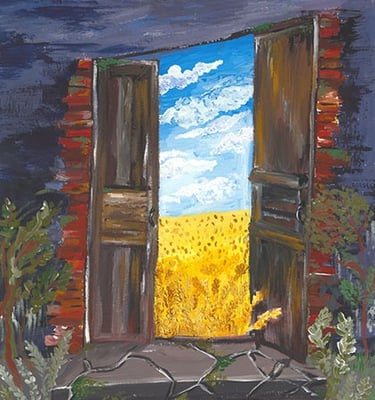
Daryna has represented a free Ukraine through its blue & yellow flag. The symbols of the colours are the ones Daryna painted, a bright blue sky over a field of endless wheat.
This colour combination dates back to the 13th century, with the coat of arms of the city of Lviv having the golden lion shown against a blue background. The modern flag can be traced to 1848, when a wave of revolutions for self-determination swept across many countries in Europe.
After WWI, in 1918, Ukraine gained its independence and the blue & yellow flag was adopted. Conquered by the soviets, Ukraine was banned from using this flag, until it regained its independence in 1991. When the Act on Independence of Ukraine was adopted on 24 August 1991, the flag was brought to the Verkhovna Rada [Ukrainian parliament]. In 1992 the blue & yellow flag was adopted as the official flag of Ukraine.
Today Flag Day is celebrated on the 23 August and Independence Day on the following day.
Exhibition
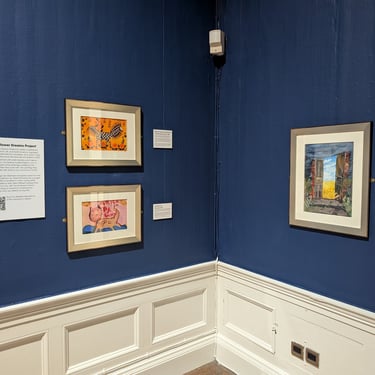
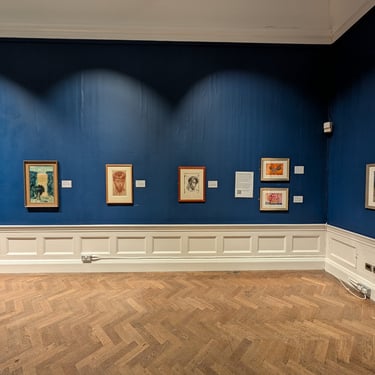
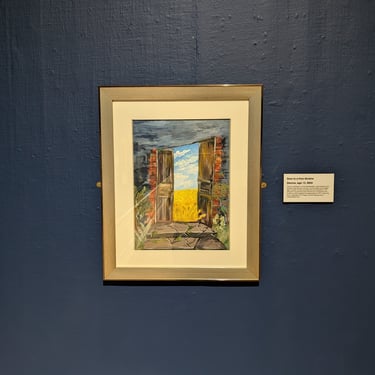
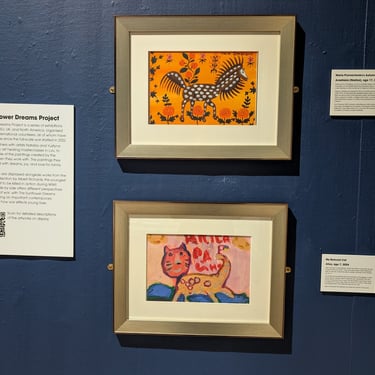
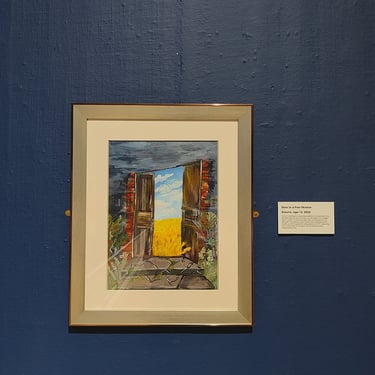
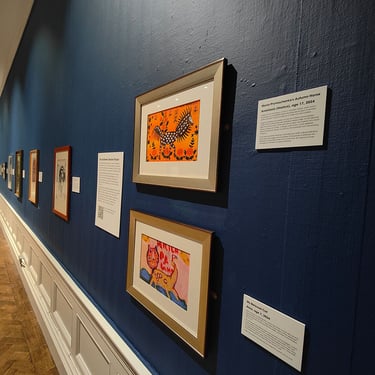

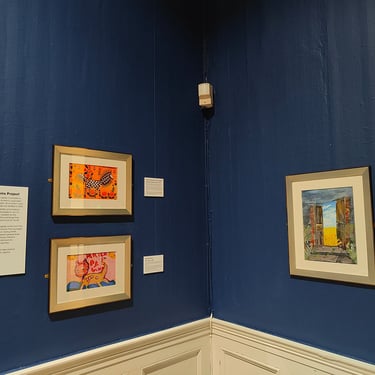
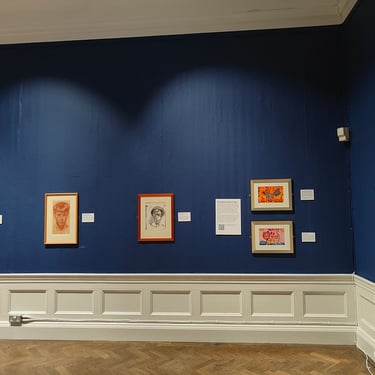
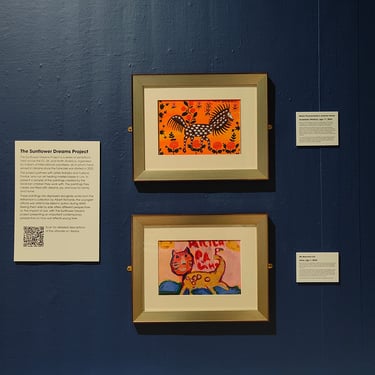
Contact Us
Donate
Would you like to donate?
Any donation is gratefully received.
Thank you.
Please click the link below for our donation information.
